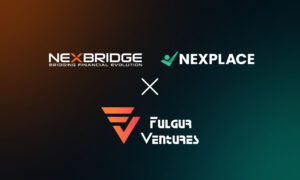The bank industry was in dire need of a revolution as younger consumers had no interest in banking the same way as their parents and grandparents. Ambitious entrepreneurs were eager to disrupt the status quo and challenge the big banks that have existed for decades.
The new wave of financial technology (fintech) companies are up against banks that are armed with billions of dollars in cash but were quick to realize the key to success is merely giving consumers what they want: online checking accounts with no fees.
What Is An Online Checking Account?
An online checking account refers to a personal or business bank account that exists strictly in the online universe. For decades, every bank account was attached to a physical branch, be it at a strip mall or as a stand-alone location.
ING Direct, now known as Tangerine, was the first financial institution to move away from the physical retail business model in Canada back in 1997.
ING introduced a new way of banking from home. Gone are the days of visiting a branch and forced to sit and talk to a representative that tries to sell products and services no one wants.
As is the case with any industry, the more a company succeeds in winning clients, the more money it has its disposal to reinvest in its business. In its first few years, ING attracted hundreds of thousands of Canadian customers and the momentum hasn’t stopped.
Rebranded as Tangerine in 2014 after it was acquired by Scotiabank, the online bank continued to evolve to boast more than 2 million customers today. The millions of people not only enjoy a free bank account but take advantage of competitive GIC rates and attractive lending products like credit cards and mortgages.
True to its origins, Tangerine remains an online-only financial institution to this day. Granted, it has a few locations in urban centers, they would take offense to anyone calling them a branch. Rather, it is branded as “Tangerine Cafés where people can go to learn more about the products and services offered.
Growing Popularity Amid COVID
Tangerine’s 2 million customer count pales in comparison to RBC’s 17 million clients. RBC, along with the other big banks, does offer similar free bank accounts but it always comes with a catch, such as a requirement to hold a minimum account balance of $5,000.
There are several reasons why online banks aren’t as popular as they should be, but it mostly boils down to two factors. First, a few million people might be OK with never being able to visit a branch to deposit cash, resolve an issue, or discuss a six- or seven-digit mortgage with a person. But many millions more find this to be unacceptable and a couple of dollars a month is a reasonable cost to have access to speak to a human.
Second, the older generation, say those 50-years and older, will simply never embrace online banking as an alternative to what they have been doing for decades.
At this rate, big banks will continue to dominate the market for decades to come. But the COVID-19 pandemic may have changed the landscape for good.
Among the first major fintech players to acknowledge an unusual shift in customer demographic was online payment giant PayPal. The company said in May that people over 50 were its fastest-growing segment since the early days of the pandemic in March.
This makes sense at every level. Older people are more vulnerable to the side effects of COVID-19 but their banking needs haven’t changed. Many jurisdictions worldwide even mandated older people to stay home in the early days of the pandemic so visiting their bank branch to transfer money to family or friends was no longer an option.
It may not be a change that they want or entered into willingly, but it is one that has become necessary from a health and safety point of view.
At some point in the future, the global pandemic will be resolved and life can return at least partially to its prior “normal.” But by that point, many consumer habits that prevented the adoption of online banking will be broken.
For example, a Bain & Company survey found that nearly one out of three consumers stopped using payments like cash during the pandemic. Many of these people emphasized the ability to visit a branch to deposit cash as a top priority but have now come to see first hand it isn’t necessary.
Another survey found that nearly one out of five consumers want to reduce their visits to a branch in a post-COVID-19 universe for a routine transaction or a sales or services interaction.
Online banks can certainly take advantage of these favorable tailwinds and start marketing their compelling proposition to customers. An effective campaign can focus on the fact that the business model consumers now want from a bank today existed 20 years already. By contrast, the stale old outdated banks are quickly becoming obsolete and a relic of the past.
Bottom Line: Accelerated Adoption
The outlook for the global online banking industry improved dramatically amid the pandemic and it is only a matter of time before data is released to back this thesis. But in most cases, it will be difficult to determine just how big the industry will become.
Tangerine’s parent company Scotiabank doesn’t break down the digital bank’s performance in its earnings reports. Tangerine’s performance is grouped together with Scotiabank’s namesake banking business as part of the “Canadian Banking” division. The same is true for rival Motive Financial and its parent company Canadian Western Bank.
Regardless, the future of banking will become more digital, and online banks like Tangerine will continue eating away market share from the major banks.



































